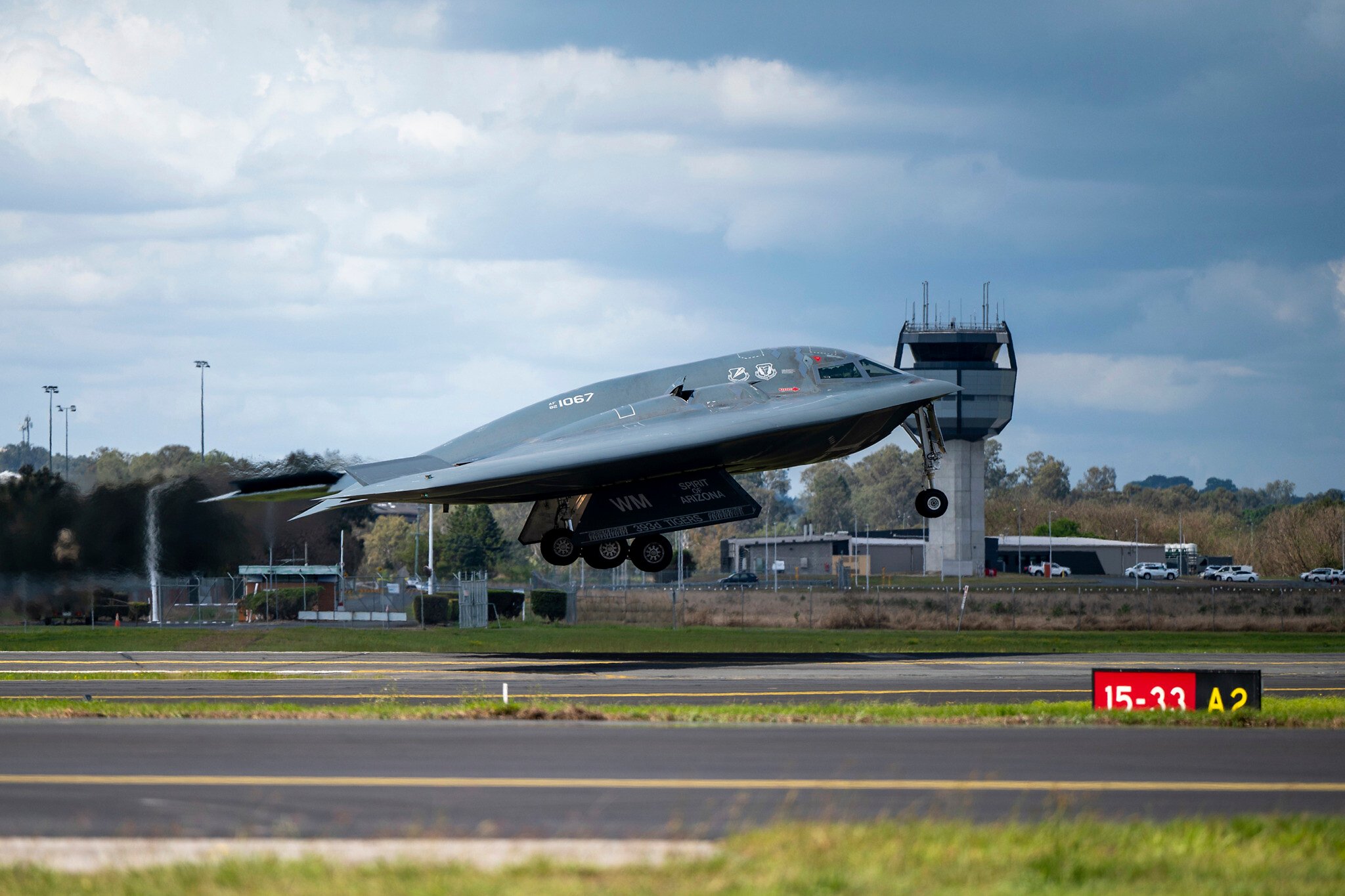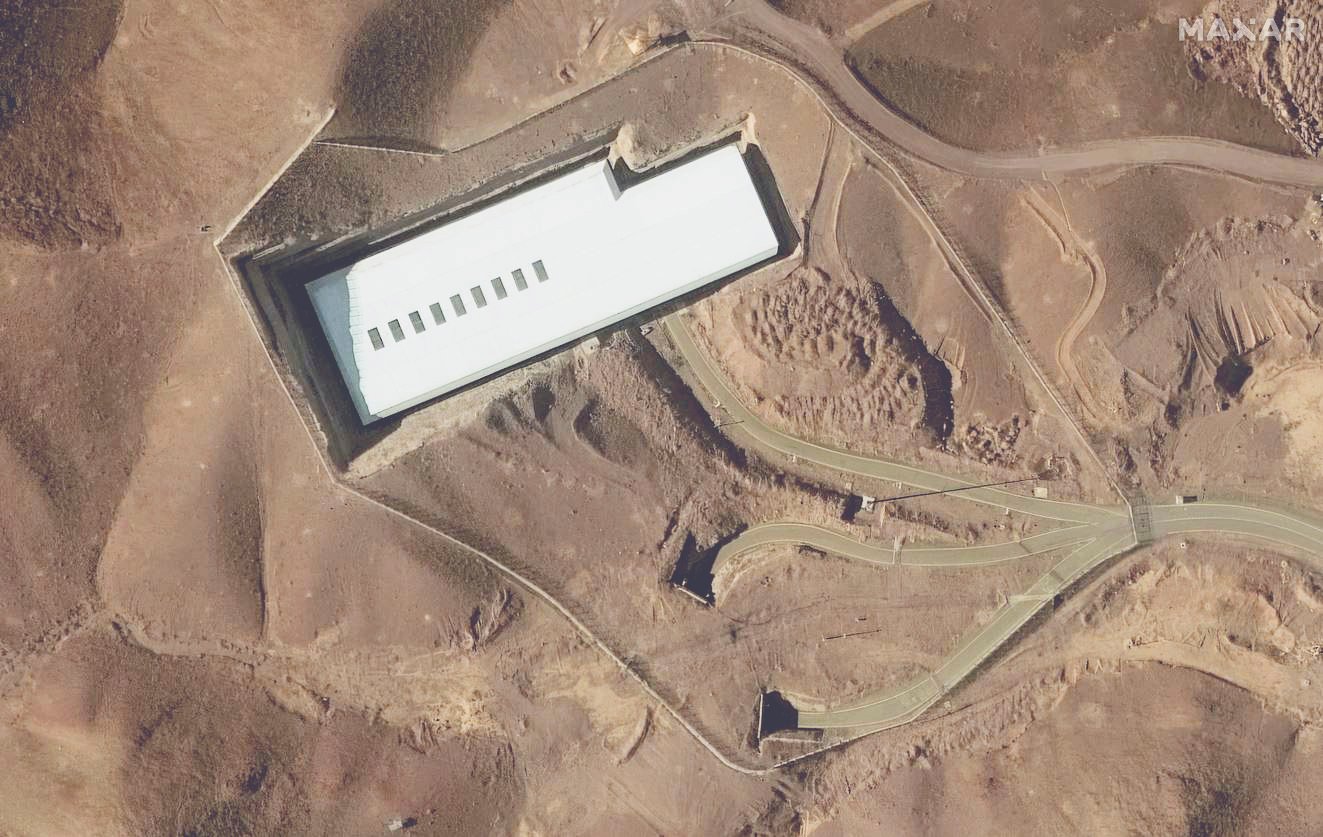



American B-2 stealth bombers, the advanced aircraft known for being capable of delivering huge bunker buster bombs potentially capable of destroying Iran’s underground nuclear facility in Fordo, are heading toward Guam in the Pacific Ocean, open-source flight trackers showed on Saturday, possibly signaling that the US is preparing for a strike on the Iranian site.
According to Haaretz, between 2 and 4 stealth bombers, alongside 6 refueling aircraft, ascended from the Whiteman Air Force Base in Johnson County, Missouri, toward Naval Base Guam.
It is unclear whether the planes will continue toward Diego Garcia, the Chagos Archipelago island that serves as a US-UK base some 3,500 kilometers (2,175 miles) from Iran.
Diego Garcia is seen as an ideal location from which to operate in the Middle East. The Pentagon deployed six B-2 bombers to the island in March, making use of the aircraft during the month-long US bombing campaign in Yemen and as a deterrence against Iran during a period of tensions as the two countries began talks over Tehran’s nuclear program. The B-2 bombers were replaced last month with B-52s, which are considered a downgrade, according to officials.
The B-2 is considered the only aircraft capable of carrying the huge bunker buster bombs seen as necessary to destroy Iran’s nuclear facility in Fordo, which is built deep under a mountain some 30 kilometers north of the city of Qom.
According to The Times, the US would need British permission to attack from Diego Garcia because the Island is under British sovereignty, but this would not be necessary if the aircraft take off from Guam, which is about 12,800 kilometers (7,900 miles) from Fordo.
US President Donald Trump said on Thursday he would decide whether the US would attack Iran within the next two weeks.
The administration has sent mixed messages over the question of whether it will commit American forces believed vital to destroying Iran’s most hardened nuclear sites, after a week that saw Trump vacillate sharply between support for a peaceful solution and a threat to kill Ayatollah Ali Khamenei.
On Wednesday, he said nobody knew what he would do.
“Based on the fact that there is a chance for substantial negotiations that may or may not take place with Iran in the near future, I will make my decision on whether or not to go within the next two weeks,” Trump said in a statement.
Israeli officials have indicated in conversations with some outlets that Israel may not wait that long, and could decide to enact undisclosed plans to tackle Fordo without US assistance if Washington continues to put off a decision. It is not clear what shape such an attack would take.
Israeli officials have vacillated on the issue of how long the war will last. Some estimates have put it at two to three weeks, but IDF chief Eyal Zamir said Friday the campaign could be “prolonged.”
Prime Minister Benjamin Netanyahu told Israel’s Kan broadcaster that the campaign was proceeding “ahead of schedule.”
He added that Israel could hit all nuclear facilities in Iran, including Fordo, without saying whether it would require US assistance.
“We will achieve all our objectives and hit all of their nuclear facilities. We have the capability to do that,” he said.
Whether Trump “wants to join or not — that’s entirely his decision,” Netanyahu added.
Critics say that in the five months since returning to office, Trump has issued a range of deadlines – including to warring Russia and Ukraine and to other countries in trade tariff negotiations – only to suspend those deadlines or allow them to slide. Trump did note, however, that Israel’s bombing campaign against Iran began one day after the 60-day deadline he gave for reaching a deal with Tehran over its nuclear program.
Israel says its sweeping assault, which began last Friday, on Iran’s top military leaders, nuclear scientists, uranium enrichment sites, and ballistic missile program is necessary to prevent the Islamic Republic from realizing its avowed plan to destroy the Jewish state.
Iran has retaliated by launching over 470 ballistic missiles and around 1,000 drones at Israel.
So far, Iran’s missile attacks have killed 24 people and wounded thousands in Israel, according to health officials and hospitals. Some of the missiles have hit apartment buildings, causing heavy damage.

